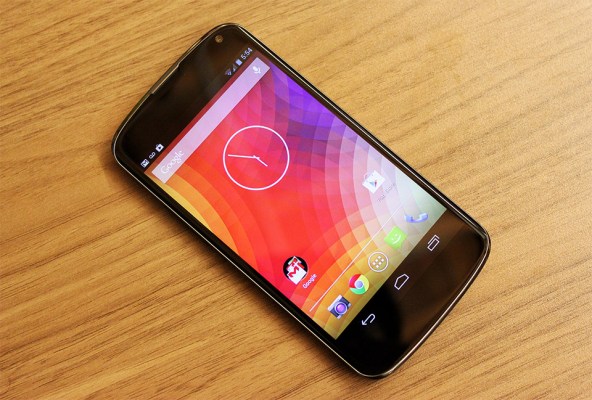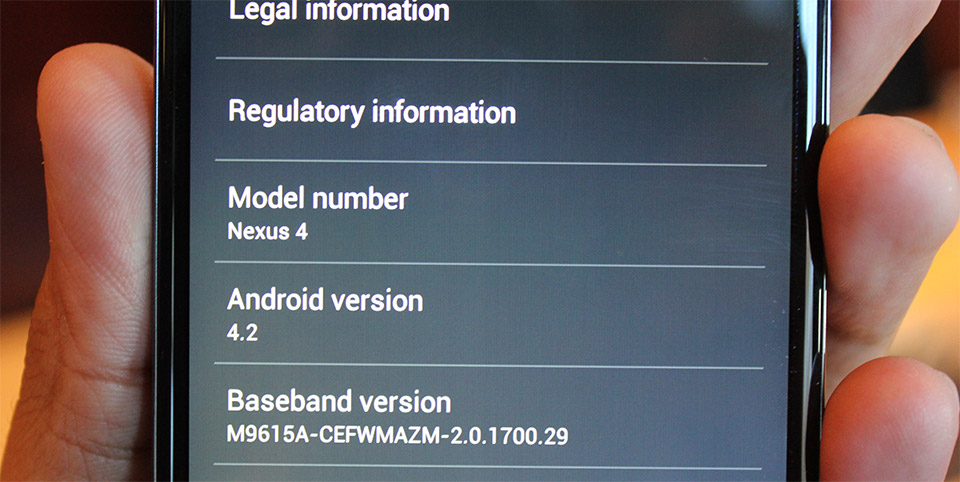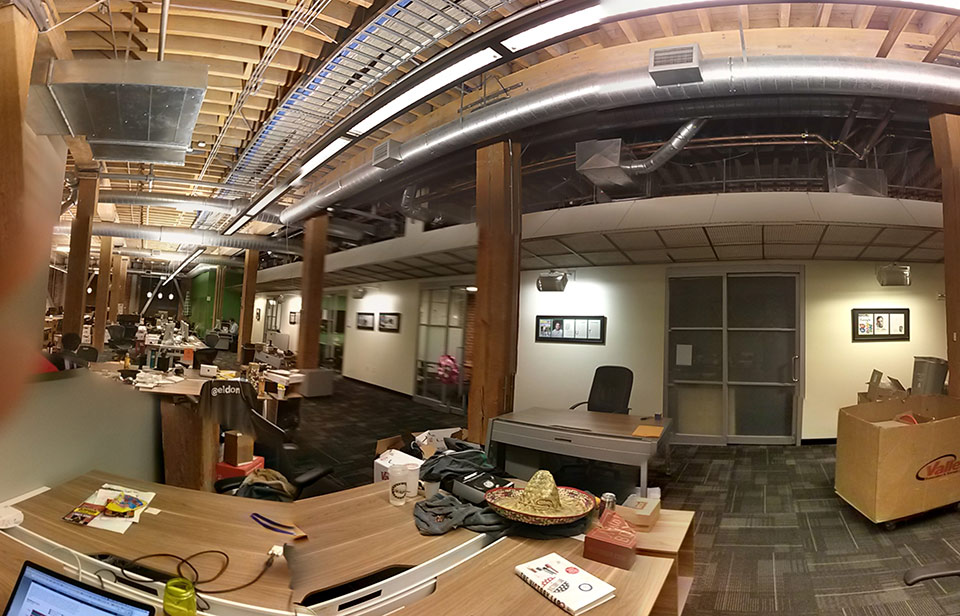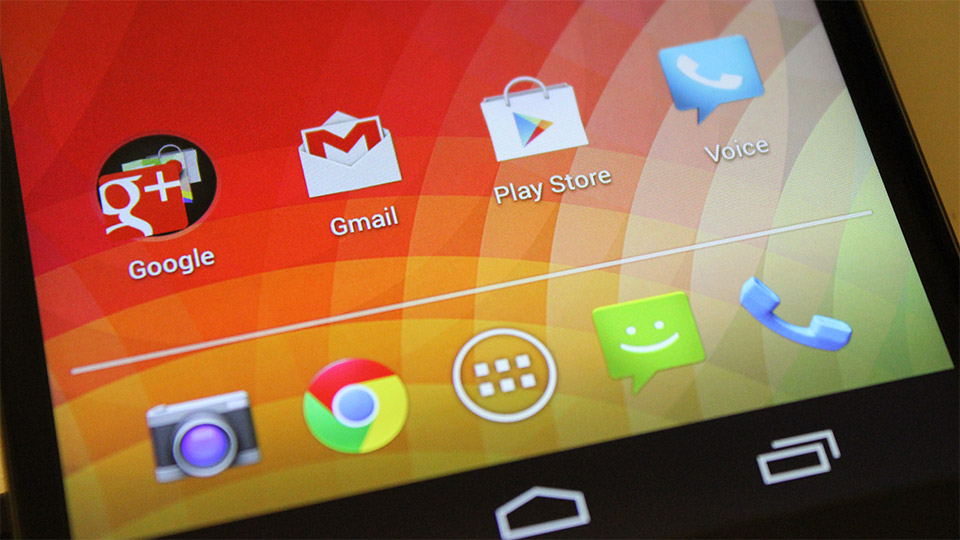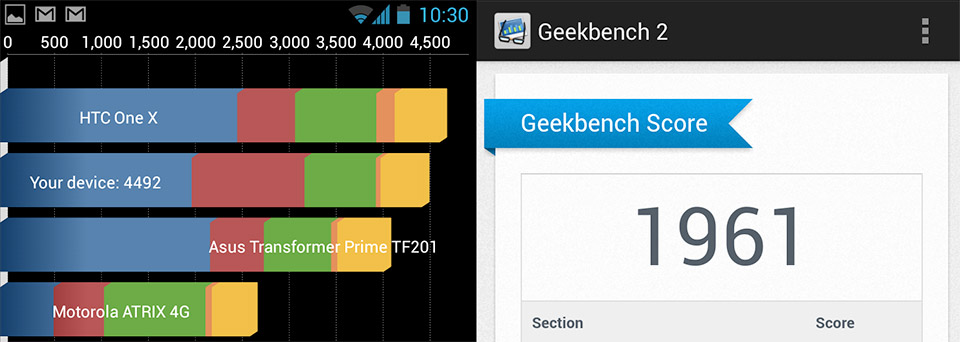It seems like ages since Google and HTC first kicked off the Nexus experiment (it was 2010, but who’s counting?). Now here we are, over two years later, and we’re on our fourth Nexus smartphone. There’s no question that the hardware has gotten progressively better, but these past few months have also seen some notable changes in the Nexus brand itself.
With devices like the Nexus 7 picking up plenty of mainstream traction (something that the Nexus smartphones were never really able to do), Google now seems to be retooling the rest of its line up to appeal to masses too. Will the Nexus 4 be able to pick up the same steam its older brother can? Or is it still meant mostly for the Android-adoring niche dwellers? Either way, I think the Nexus 4 is a stellar device worthy or your consideration, but some of you will have to do more considering than others.
- 4.7-inch IPS Plus LCD running at 1280×768
- 1.5GHz Snapdragon S4 Pro chipset, with 2GB of RAM and an Adreno 320 GPU
- Comes with either 8GB ($299) or 16GB ($349) of internal storage
- Fully unlocked, and works with just about any GSM carrier’s HSPA data network
- NFC
- 2,100 mAh battery
- Available on November 13, either from the Google Play Store or T-Mobile ($199 w/ 2 year contract)
I spent a decent chunk of my hands-on post digging into the fit and finish of the Nexus 4 hardware, but I can sum up most of it in a single sentence: the Nexus 4 feels great. I know, I’m surprised too — LG has never had the best track record when it came to putting out solid, robust hardware, but the 139g Nexus 4 manages to feel sturdy and confidence-inspiring without crossing into hefty territory. Even the power button and volume rocker (located on the Nexus 4’s right and left edges, respectively) feel well-constructed: they’re solid and yield to pressure with a satisfying click. I know, I’m a dork.
From the front, the 4 bears more than a passing resemblance to the Galaxy Nexus; were it not for the speaker’s alignment along the device’s top edge, a slightly smaller looking camera pod, and a slim ring of metal-esque plastic running around the Nexus 4’s curved Gorilla Glass front plate, the two devices would look like twins. The differences become more apparent as you start to turn the device around though — unlike the gentle curves of the Galaxy Nexus, the sides of the Nexus 4 are flat, angular, and made of a soft touch material that provides just the right amount of grip.
Meanwhile, the back is where things start to get downright funky. Like the Optimus G (and its multiple variants), LG opted to liven things up a bit with a sort of reflective pixelated finish, and while I wasn’t too fond of it at first, I slowly grew to appreciate the flair. While I’m pontificating on what amounts to the device’s butt, there’s no other mention of the device’s Google lineage to be found aside from a sizable, stylized Nexus logo emblazoned just below the LED flash. It’s a trend that was originally kicked off by Asus’s Nexus 7, but it’s curious to see how Google seems to be downplaying its own brand in favor of shining a spotlight on the Nexus name and the identity of its hardware partner.
There’s no excuse for a phone like this to lack a microSD card slot
I’m firmly of the opinion that the Nexus 4 looks pretty slick, but that slickness extends far beyond just aesthetics. You see, the Nexus’s smooth backplate makes it terribly easy to pull out of (or shove into) a pocket — just be careful where you put it down, because I’ve had to lunge and catch the thing a few times as it slid off a surface that was more slanted than I had thought.
Of course, the Nexus 4 isn’t a perfect device. In this day and age, there’s no excuse for a phone like this to lack a microSD card slot (well, other than to sell models with more memory for more money), but that’s been a Nexus hallmark since the days of the Nexus S. I also would’ve preferred it if the rear speaker wasn’t flush with the backplate since it helps to muffle audio almost completely once you set the thing down on a table, but all things considered I’m pretty pleased with the device’s construction. Sure, it doesn’t cause me to swoon the way Galaxy Nexus did last year, but there’s little question that the Nexus 4 is a solid piece of kit.
As fond as I am of the hardware, that’s only ever just part of the equation. The Nexus 4’s other big draw is that it’s the first smartphone on the market to run Android 4.2 Jelly Bean (and a clean build at that, in keeping with tradition), which is especially appealing to folks like me because I normally can’t stand manufacturer-mandated customizations. TouchWiz? Yeah, no. HTC Sense? Better, but I’d still rather live without it.
That said, it’s important to keep your expectations tempered when it comes to Android 4.2 — it’s rather telling that Google thought it substantive enough to get a decent version number bump but not enough to garner a new dessert-themed codename. There are plenty of neat tweaks and additions to be found here, but it’s arguable as to whether or not a smattering of changes a great update makes.
Anyway, that’s enough hemming and hawing, here’s what’s new and how well it works:
Google Voice Search:
Google has made a handful of neat improvements to its Voice Search, but the biggest has got to be its newfound ability to launch apps. Tapping the red button within Voice Search and commanding the device to, say, “launch Gmail” usually works pretty nicely… except when it doesn’t. Really, the problem here is that there’s no way to tell which apps will actually launch when asked unless you go through and test all of them… which I did. Out of all the preloaded apps on the Nexus 4, only the following will fire up reliably when vocally prompted:
Calendar, Calculator, Camera, Clock, Earth (it seriously can’t recognize “launch Google Earth”), Maps Messaging, Messenger, Phone, and YouTube.
Asking to launch the rest of them (plus most other apps I’ve downloaded) instead returns search results. And even though Voice Search is generally pretty solid when it comes to transcribing and understanding my commands, it still hears “watch” when I say “launch” too often for my liking. In short, it’s a needed-if-underwhelming step forward for the service, but it’s no Siri (who, for the record, isn’t so great either).
Daydreams:
They’re screensavers for your phone, and they work well enough. Really itching to look at your photos while the Nexus 4 is charging? Never quite found a way to watch an endless steam of shifting colors? If you for some reason answered yes to any of these questions, then you and Daydreams are going to be good friends — look for it in the Display section of the device’s settings.
Quick Settings Panel:
The addition of a quick settings pane in the notification shade is one of those things you can’t really appreciate until you’ve spent some time with it. Before I actually went hands-on with 4.2, I had never had a problem with popping right into the Settings app whenever I needed to fiddle with something. Now, most of the quick tweaks I find myself having to make (mostly minute brightness adjustments, toggling Airplane Mode, and checking battery levels) can be done straight from this new panel. It’s hardly a make-it-or-break-it feature for 4.2, but it’s certainly nice enough to have.
Gesture Keyboard:
When you first see Android 4.2’s Gesture Keyboard in action, it’s damn near impossible not to think of the Swype keyboard. After all, the concept is identical — instead of pecking out missive with your thumbs, you sweep them across the keyboard to trace out words and phrases. I’ll admit it: it’s been a while since I’ve used anything of the sort, but I’ve been having a grand ol’ time with the gesture keyboard so far — it’s fast and fluid, not to mention a bit more accurate than I remember Swype being. I don’t know that it’ll replace my two-thumbed tapping approach, but it could (and the fact that I don’t have to jump into the settings and change keyboards is a distinct plus).
Lockscreen Widgets:
Sadly, one of my favorite features isn’t quite ready for prime time yet. In a brief press presentation delivered in lieu of its original Android shindig in New York, Google showed off 4.2’s ability to load up widgets directly on the lockscreen. I can’t blame you if that sounds a little passé since companies like HTC have been pulling that trick for a while now, but it’s always nice to see a thoughtful idea get a very official nod. That said, Google has said that it won’t be available to fiddle with until the Nexus 4’s official release on November 14, so I couldn’t fiddle with it just yet.
Multiple User Accounts:
It doesn’t exist in the phone version of Android 4.2. This needs to be addressed — I’d love to be able to hand my phone to a friend in need without secretly wondering whether or not they’ll find my stash of jaunty Cole Porter tunes.
Android 4.2 isn’t the tremendous leap forward that some Google faithful were hoping for, but it definitely delivered some drastic changes to the Camera application. For one, the camera UI has been drastically decluttered, leaving only a big blue shutter button, a shooting mode toggle (for bounding from photos to videos to panoramas), and a shortcut for the new radial menu.
Radial menu? When you either tap on that shortcut button or long-press the screen, a radial menu pops up to give you quick access to all of your other settings. Need to tweak the flash? Swipe up and to the right in the menu. Want to fiddle with the exposure? That’s a swipe to the bottom left. Frankly, I love it — it’s a smart way to put control over shots right where you need it. As far as the photos themselves go, they were sharp and generally very accurate when it came to color reproduction. Low-light performance is always questionable when it comes to the sorts of small sensors seen in smartphones, but the Nexus 4 did an above-average job in keep the noise down.
And the pièce de résistance: PhotoSphere. Google’s Android team apparently thought that capturing panoramas was old-hat, and turned to the company’s Street View team for inspiration. The end result was a simple, intuitive way to create fully-immersive panoramas — all you have to do is point the camera at a series of float blue dots, and voila, you’re good to go.
Of course, when you dump your PhotoSpheres online for the world to see the effect isn’t as impressive. Here’s a small one of the TechCrunch SF office, just to give you an idea:
As neat as PhotoSpheres are to look at, they’re not always the easiest things to create — even if you’re being very cautious with how you pan around the room, it’s still very easy to get very visible seams.
The Nexus 4’s 4.7-inch HD IPS+ LCD display sounds like a hell of a panel on paper, but it’s even better in person. It’s bright, clear (it runs at a resolution of 1280 x 768, which makes for a pixel density of 320ppi), and is nearly flush against the curvy protective of glass above it.
Let’s not mince words here: the Nexus 4’s screen is awesome.
That said, my eyes seem to have become a bit biased over time. Colors in general seemed sort of muted, and blacks aren’t as deep as they would be on an AMOLED panel (say, like the one featured prominently in the Galaxy Nexus), but the screen LG opted for has some distinct advantages. Really, the biggest one for me is the accuracy of white reproduction — thanks to its PenTile subpixel display, the Galaxy Nexus’s whites often took on a sickly greenish cast. It’s the sort of thing someone could theoretically get used to, but I never could.
The Nexus 4 on the other hand produced crisp, bright whites that seemed shocking when compared to those seen on its predecessor’s display, and very glad for it. I fired up my usual pair of test videos (available here, in case you were curious about my taste in K-Pop and Broadway musicals) in search of bum viewing angles, and ultimately came away satisfied. AMOLED junkies looking to make the switch may bristle at the differences between screens, but let’s not mince words here: the Nexus 4’s screen is awesome.
When it comes to how to the device actually performs, there are two popular ways to go about describing it. The first is to speak anecdotally — the Nexus 4 has been extraordinarily snappy during our time together, thanks in large part to its 1.5GHz Snapdragon S4 Pro processor, Adreno 320 GPU, and 2GB of RAM. What’s more, it didn’t so much as bat a proverbial eyelash while cruising through Liberty City in GTA III, or while crafting big cubist statues in Minecraft Pocket edition. The only time I’ve ever seen the phone stutter is when I’m punching in numbers of all things — there’s a peculiar lag that only seems to manifest when I’m trying dial a phone number or use the calculator.
For a device that seems so hearty on paper though, you expect some of its benchmarks to be much higher than they actually were. Take the Nexus 4’s Quadrant performance — in five trials, the Nexus 4’s average Quadrant score was 4360, well below those of older devices like the US-spec HTC One X (4995), Galaxy S III (5,063), and and Atrix HD (5084).
What’s really puzzling is how the device stacks up to its cousin the LG Optimus G. LG’s flagship smartphone generates numbers that far exceed that of its Nexus-branded counterpart — its five-trial average came in at a whopping 7033, quite a leap considering that this is the device that ostensibly served as the base for the Nexus 4. It should go without saying that Quadrant scores are far from a perfect metric, but I suspect the Nexus 4’s abnormally low showing has more to do with software than it does with bum components. The device’s Geekbench performance seems to stand as proof of that — the Nexus 4 scored 1961, handily beating its cousin the Optimus G.
By now, it’s no secret that the Nexus 4 doesn’t come equipped with an LTE radio — it instead packs a pentaband GSM/HSPA+ radio, meaning it’ll play nice with SIM cards from just about any GSM carrier out there right now. I won’t dwell too much on the controversy that this particular hardware decision has stirred up (at least partially because it’s been done to death already), but I think the move makes total sense considering that Google is trying to appeal to as many markets as possible with a single handset.
That said, I’ve been testing the Nexus 4 with a T-Mobile SIM, and the carrier’s data speeds were a mixed bag. While roaming the streets of San Francisco, the Nexus 4 managed to achieve speeds that ranged between 3.8 and 14.5Mbps down, and between 1 and 2Mbps up. Your mileage may vary of course, but don’t forget: you can always pop in an AT&T SIM instead if T-Mobile just doesn’t work around you.
Oh, and lest I neglect to address the actual phone part of the equation, call quality was clear and crisp, though main speaker volume could’ve been a bit louder.
In our standard battery rundown test (screen brightness set to 50%, with the device set to perform an endless loop of Google image searches), the Nexus 4 didn’t perform quite as well as I would’ve hoped. The device managed to hang in there for just over 5.5 hours before succumbing to acute empty battery syndrome. When it came to overall day-to-day use though, the Nexus hung in there with for a full working day dashing through airports, firing off emails, and checking vainly to see if my flight had been cancelled.

The Nexus 4 is a device that tickles me on many levels — it’s got a class-leading spec sheet, it’s completely unlocked, and as far as devices sold without contracts go it’s pretty damned cheap. More simply put, it’s the sort of device that’s designed to kick my salivary glands into action and it certainly succeeds on that front. The real question though is whether or not the Nexus 4 will have the same effect on you, and that I’m not too sure about.
See, there’s no question that Google has been retooling its Nexus brand to be more consumer-oriented — devices like the popular Nexus 7 and the curious Nexus Q (while it was alive, anyway) were proof of that. Even so, the Nexus 4 still seems like a device that’s best appreciated by Android purists. As much as I like living, playing, and working with an untouched version of Android, there are other (yes, manufacturer-customized) devices out there that pack more in terms of creature comforts and general consumer friendliness.
If you’re an Android enthusiast, a tinkerer, someone who hates signing multi-year contracts for high-end hardware, or just enjoy experiencing the bleeding edge, you really can’t buy this thing fast enough. That’s not to say that absolutely no one else will enjoy this thing — there’s a whole lot to like about the Nexus 4 — but those of you who don’t fall into one of those camps may be better served by a different device.
Oh, and one more thing: I’ll continue to use the Nexus 4 (and every review device I get going forward) for an additional two weeks, to see if/how my impressions of the device change after living with it even longer. Stay tuned for more.
